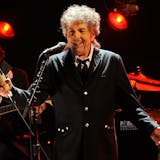Urban design experts at the University of Minnesota are redrawing what city blocks could look like in a world of driverless vehicles.
Roads of the future will likely be narrower, greener and easier to share with pedestrians once autonomous vehicles evolve from the drawing boards and testing roads of automakers and tech firms to widespread use on city streets.
The move to wrest the controls from human drivers is gaining traction. The U has just received a $1.75 million grant from the National Science Foundation to further study autonomous vehicles and the future of transportation services. State agencies are testing the technology, and Minneapolis and St. Paul city officials are factoring in the potential impact of autonomous vehicles as they draft plans to guide development over the next two decades.
This summer, researchers at the U's Minnesota Design Center focused on locations like the intersection of Lexington Parkway and Marshall Avenue in St. Paul and the parking lot for the Kmart store on Lake Street in Minneapolis as they explore the impact autonomous vehicles could have on street design in the Twin Cities.
Already, researchers see big potential in an anticipated ability of autonomous vehicles to follow more precise paths, allowing roads to be much narrower, freeing up land for other purposes. Car sharing may increase, allowing back alleys to be redeveloped into pocket parks. Parking lots could become wetlands or ponds.
"You can start to do other things in the street like literally have picnic tables or community gardens or playgrounds, things you wouldn't even imagine putting next to a street or public right of way is now possible," said Thomas Fisher, director of the Minnesota Design Center and one of the lead researchers for the Shared Autonomous Vehicle Street Design study.
Fully autonomous vehicles are expected to be available to consumers by 2025, according to a study by the National League of Cities.
In August, the Kroger supermarket chain started a grocery delivery pilot program with a robotic vehicle in the Phoenix area. Earlier in the summer, Waymo, formerly Google's self-driving car project, announced a pilot to transport customers to Walmart stores. Japanese automaker Toyota recently invested $500 million into ride-sharing company Uber to accelerate its self-driving program.



